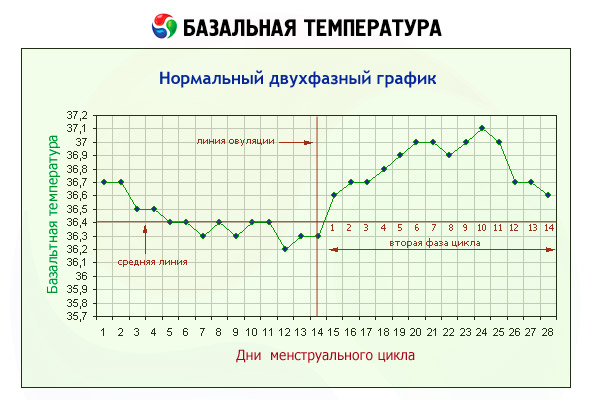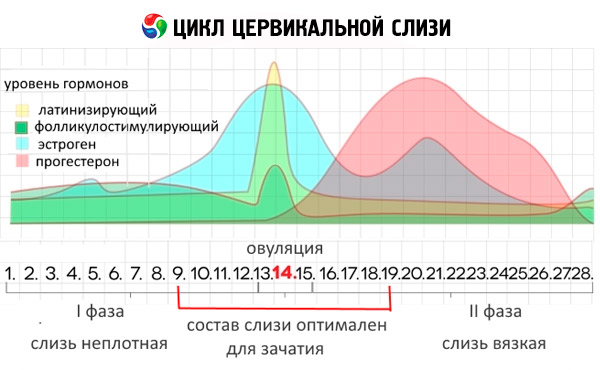
All iLive content is medically reviewed or fact checked to ensure as much factual accuracy as possible.
We have strict sourcing guidelines and only link to reputable media sites, academic research institutions and, whenever possible, medically peer reviewed studies. Note that the numbers in parentheses ([1], [2], etc.) are clickable links to these studies.
If you feel that any of our content is inaccurate, out-of-date, or otherwise questionable, please select it and press Ctrl + Enter.
Functional diagnostic methods in gynecology
Medical expert of the article
Last reviewed: 07.07.2025

Functional diagnostic methods in gynecology allow diagnosing dysfunctions of the reproductive system and are also important for monitoring the results of functional therapy.
Basal temperature measurement
The test is based on the hyperthermic effect of progesterone. The latter has a direct effect on the thermoregulation center located in the hypothalamus. Therefore, with an increase in progesterone secretion in the second half of the normal menstrual cycle, an increase in basal temperature by 0.4-0.8 °C is noted. A persistent two-phase type of temperature indicates that ovulation has occurred and the presence of a functionally active corpus luteum.
Basal temperature is measured with the same thermometer in the morning on an empty stomach, without getting out of bed, for 10 minutes. The data obtained are displayed graphically. In all variants of normal changes in basal temperature in the follicular phase of the cycle, it is below 37 °C, and after ovulation it rises to 37.1-37.3 °C, rarely to 37.6 °C.
Most often, before the temperature starts to rise, a short-term decrease (0.3-0.4°) is observed, which corresponds in time to ovulation. 1-2 days before the onset of menstruation, the basal temperature decreases again.

To establish the nature of the temperature curve, it is necessary to measure the temperature during 3 menstrual cycles. If the basal temperature in the 2nd phase of the cycle has increased by 0.2-0.3 °C, this indicates insufficiency of the corpus luteum function. A rapid rise in temperature 2-3 days before the onset of menstruation is associated with insufficiency of both progesterone and estrogens. A monophasic temperature within 36.5-36.9 °C with minor fluctuations indicates an anovulatory cycle. A persistent increase in temperature within 37.2-37.4 °C for 18 days or more or 7 days after a delay in the next menstruation with a regular menstrual cycle may be in the case of pregnancy. In a normal pregnancy, the basal temperature remains elevated during the first 4 months. A decrease in temperature often indicates a threat of termination of pregnancy. When conducting this test, it should be remembered that basal temperature can increase with chronic infections, as well as with pathological changes in the higher parts of the central nervous system, hyperthyroidism.
Basal or rectal (in the rectum) temperature is measured by a woman herself daily without getting out of bed for 10 minutes throughout the menstrual cycle. Basal temperature in a healthy woman changes depending on the phase of the menstrual cycle. During an ovulatory cycle with full first and second phases, basal temperature increases by 0.5° C immediately after ovulation and remains at this level for 12-14 days. The rise in temperature is due to the thermogenic effect of progesterone on the thermoregulation center.
To establish the nature of the temperature curve, it is necessary to measure the basal temperature over 3 cycles.
Cervical mucus examination
During a normal menstrual cycle, the physicochemical properties of mucus and the amount of secretion are subject to characteristic changes (from 60 mg/day in the early follicular phase to 700 mg/day during ovulation). By this time, the activity of some mucus enzymes increases and its fluidity appears, associated with a decrease in viscosity. The phenomena of the pupil, fern, and tension of cervical mucus are based on changes in secretion and the refractive power of cervical mucus.
The pupil phenomenon is associated with changes in the amount of mucus depending on the hormonal saturation of the body and the tone of the cervix. On the 8th-9th day of the menstrual cycle, glassy transparent mucus appears in the widened external opening of the cervical canal. When a beam of light is directed at the external os with a protruding drop of mucus, it appears dark and resembles a pupil. The amount of secreted mucus and the diameter of the external os progressively increase, reaching a maximum by ovulation, then they decrease to minimum values in the late luteal phase.
The test is assessed on a three-point scale:
- presence of a dark spot - 1 point (+) - early follicular phase;
- the presence of a dark spot - 0.2-0.25 cm - 2 points (++) - average follicular phase;
- the presence of a dark spot - 0.3-0.35 cm - 3 points (+++) - ovulation (maximum estrogen production).
After ovulation, with a decrease in estrogen secretion, the pupil symptom gradually weakens and disappears by the 20th to 23rd day of the menstrual cycle.
The presence of a weakly expressed pupil phenomenon during the menstrual cycle indicates hypoestrogenism, its maintenance during the cycle at a high level (3 points) - about hyperestrogenism, at a level of 2-3 points - about the insufficiency of the function of the corpus luteum. In case of erosion, endocervicitis, old ruptures of the cervix, the test is not typical.
The fern phenomenon (arborization test) is based on the ability of cervical mucus to form crystals when dried. The cause of crystallization is considered to be changes in the physicochemical properties of mucus under the influence of estrogens (the interaction of sodium chloride with polysaccharides, colloids and mucin, the pH of the mucus).
The material is collected with anatomical tweezers, which are inserted into the cervical canal to a depth of 0.5 cm. The resulting drop of mucus is transferred to a glass slide and dried. The assessment is made under a microscope at low magnification. Already at 2 points (++) a clear leaf pattern is visible, at 3 (+++) - crystals form large leaves, extending at an angle of 90°, with thick stems. With full function of the corpus luteum in the luteal phase of the cycle, the ferning phenomenon gradually disappears. The presence of the ferning phenomenon throughout the menstrual cycle indicates high secretion of estrogens and the absence of the luteal phase (anovulatory cycle with follicle persistence), its absence during the examination may indicate estrogen deficiency.
Cervical mucus tension - changes during the menstrual cycle. The maximum coincides with the maximum production of estrogens during ovulation. Mucus is collected by inserting forceps into the cervical canal. The instrument is then removed and the tension is determined by gently spreading the branches. The mucus is stretched into a thread, the length of which is measured in centimeters. The higher the production of estrogens, the longer the mucus thread. The test is assessed using a three-point system:
- 1 point (+) - thread length up to 6 cm;
- 2 points (++) - thread length 8-10 cm;
- 3 points (+++) - thread length 15-20 cm.
At 3 points, the maximum production of estrogens in the body is observed (during ovulation). In the luteal phase of the cycle, the tension of the mucus decreases again.

Cervical mucus stretching symptom
The symptom of stretching of the cervical mucus depends on the production of estrogens by the ovaries. Using tweezers, take mucus from the cervical canal, spread the branches and measure the length of the mucous thread. The maximum stretch of the mucous thread occurs at the time of ovulation and reaches 10-12 cm.

